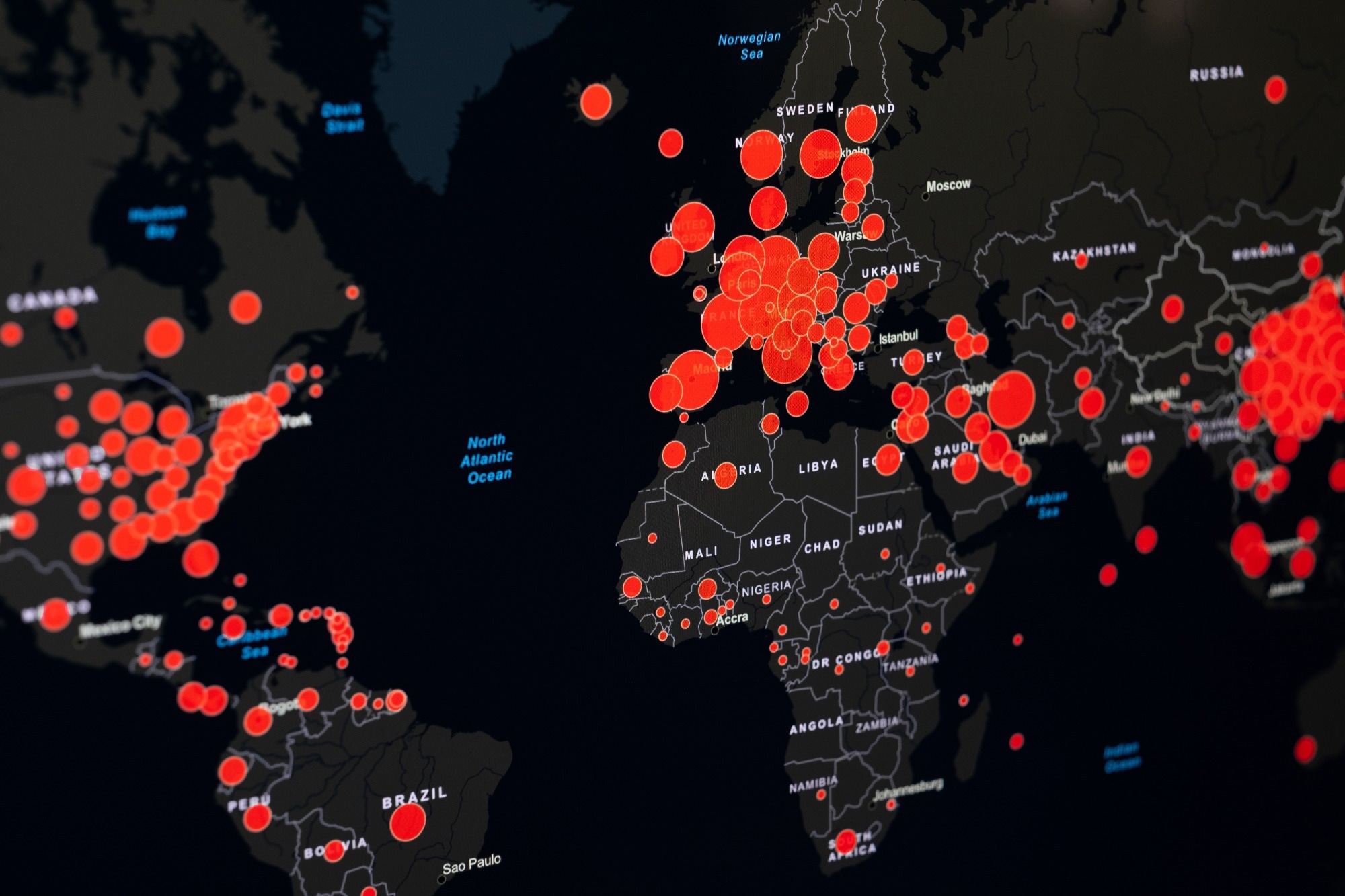How did COVID-19 pandemic restrictions impact invasive meningococcal disease trends?

In a recent study published in the Journal of Infection, a group of researchers analyzed the impact of coronavirus disease 2019 (COVID-19) pandemic restrictions on the incidence and strain distribution of invasive meningococcal disease (IMD) in England over a six-year period.

Background
IMD rapidly progresses, potentially causing severe outcomes or long-term complications. In England, post-1999 meningococcal serogroup C (MenC) vaccination programs significantly reduced MenC IMD, while the introduction of the infant meningococcal serogroup B (MenB) immunization in 2015 lowered MenB IMD.
A virulent strain of meningococcal serogroup W (MenW) IMD emergence in 2009/10 led to a 2015 adolescent meningococcal serogroups A, C, W, and Y (MenACWY) vaccination program, further curbing IMD.
By late March 2020, in response to COVID-19's spread, a national lockdown was initiated, causing a significant dip in IMD and other respiratory diseases. Restrictions lasted until mid-2021, with the World Health Organization (WHO) ending the COVID-19 emergency in May 2023. Further research is needed to understand the effect of COVID-19 restrictions on the trends and resurgence of IMD in England.
About the study
The United Kingdom (UK) Health Security Agency's Meningococcal Reference Unit (MRU) confirms invasive meningococcal isolates from National Health Service (NHS) labs across England and provides diagnostic meningococcal Polymerase Chain Reaction (PCR) testing for suspected IMD cases.
Confirmed cases undergo further scrutiny under the national IMD surveillance by the UK Health Security Agency (UKHSA's) Immunization division.
Strain characterization involved identifying the capsular group serologically and using a dot-blot enzyme-linked immunosorbent assay (ELISA) assay for serogroup and serotype. All isolates underwent whole genome sequencing via Illumina technology, and this data is publicized on the Public Multi Locus Sequence Typing (PubMLST) Neisseria database. Some 2022/23 isolates with incomplete data were excluded from specific analyses.
To detect and genogroup meningococcal deoxyribonucleic acid (DNA), Taqman real-time PCR assays were employed. Initial screenings targeted meningococcal ctrA and genogroup B-specific genes, while non-genogroup B samples were further assessed using another TaqMan assay.
Statistical evaluation primarily utilized whole population data from the Office for National Statistics, with annual incidence rates spanning from April to March, reflecting the COVID-19 restriction period. Collection dates for MRU samples provided disease onset indicators. Significant shifts in MenB isolate sequence types were detected using Fisher’s Exact Test.
Study results
From 2017 to 2020, the three years before the COVID-19 pandemic, England recorded 1864 confirmed cases of IMD with the annual incidence decreasing over this period to an average of 1.11 per 100,000. The majority of these cases were attributed to MenB, particularly among younger individuals.
Among adults 25 and older, non-B groups, especially MenW, were more common. During this timeframe, 9.0% of all IMD cases were fatal, with the highest mortality rates observed in infants and elderly.
In 2020, after the COVID-19 restrictions were introduced, there was a significant 73% decrease in IMD cases over six months compared to the same period in the previous year. During the winter of 2020/21, the incidence of IMD further declined to 0.16 per 100,000, with MenB representing 75% of cases, and deaths attributed to IMD decreased across all age groups.
The subsequent year, from 2021 to 2022, experienced a re-emergence of IMD, especially among university-aged individuals and infants. There was a noticeable uptick in MenB cases, particularly after most COVID-19 restrictions were lifted in July 2021. The incidence rate for this year was 0.31 per 100,000, and fatalities remained relatively low.
From 2022 to 2023, the third pandemic year started with a decline in IMD cases after the winter peak, but by late 2022, MenB cases surged, surpassing pre-pandemic levels by January 2023, raising the overall incidence rate to 0.64 per 100,000.
Interestingly, MenB cases expanded in all age groups except infants, where they remained stable. Mortality during this year was 0.05 per 100,000, with the highest deaths in infants, young adults, and the elderly.
Lastly, when examining the strains between April 2017 and March 2023, 2,490 IMD cases were laboratory-confirmed in England. During the pre-pandemic years, a majority of cases were confirmed by culture, but the pandemic saw a drop in this rate.
Among these strains, changes in prevalence were noted, such as ST-485 (CC41/44) becoming more dominant in MenB cases. On the other hand, the prevalence of non-MenB strains like MenW and (meningococcal serogroup Y) MenY remained relatively consistent, and no significant phylogenetic changes were observed throughout the study period.
Conclusions
To summarize, COVID-19 measures led to significant drops in respiratory diseases globally.
In England, post the March 2020 lockdown, there was a 73% reduction in IMD. Yet, after lifting the final restrictions in 2021, there was a spike in MenB disease, particularly among older teenagers and young adults, likely attributed to high meningococcal carriage rates and behaviors such as sharing university accommodations.
By 2022/23, MenB cases increased in almost all age groups, suggesting a spread from young adults to others. Despite the rise in MenB cases after the relaxation of COVID-19 measures, MenACWY disease remained stable due to the effectiveness of the adolescent MenACWY vaccine introduced in 2015.
- Clark SA, Campbell H, Ribeiro S, et al. (2023). Epidemiological and strain characteristics of invasive meningococcal disease prior to, during and after COVID-19 pandemic restrictions in England. Journal of Infection. doi:10.1016/j.jinf.2023.09.002. https://www.sciencedirect.com/science/article/pii/S0163445323005042
Posted in: Medical Research News | Disease/Infection News
Tags: Assay, Coronavirus, covid-19, Diagnostic, DNA, ELISA, Enzyme, Genes, Genome, Illumina, Immunization, Laboratory, Locus, Meningococcal Disease, Mortality, Pandemic, Polymerase, Polymerase Chain Reaction, Research, Respiratory, Technology, Vaccine, Whole Genome Sequencing

Written by
Vijay Kumar Malesu
Vijay holds a Ph.D. in Biotechnology and possesses a deep passion for microbiology. His academic journey has allowed him to delve deeper into understanding the intricate world of microorganisms. Through his research and studies, he has gained expertise in various aspects of microbiology, which includes microbial genetics, microbial physiology, and microbial ecology. Vijay has six years of scientific research experience at renowned research institutes such as the Indian Council for Agricultural Research and KIIT University. He has worked on diverse projects in microbiology, biopolymers, and drug delivery. His contributions to these areas have provided him with a comprehensive understanding of the subject matter and the ability to tackle complex research challenges.